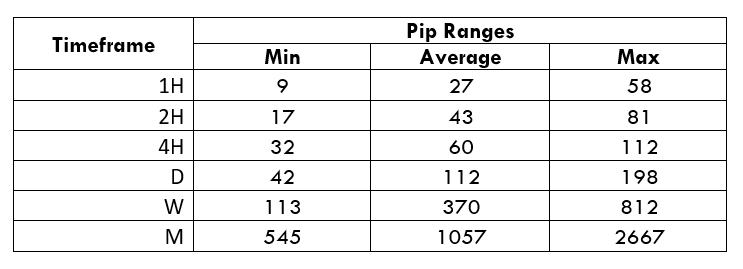Introduction
In the CADPLN currency pair, CAD is the major currency Canada and PLN is the currency of Poland. In this exotic currency pair, CAD is the base currency, and PLN is the quote currency.
Understanding CADPLN
This pair’s price determines the value of PLN, which is equivalent to one CAD. We can quote it as 1 CAD per X numbers of PLN. For example, if the CADPLN pair’s value is at 2.7983; therefore, we need almost 2.7983 PLN to buy one CAD.
CADPLN Specification
Spread
Spread is a trading cost, which is simply the difference between the Bid price and the Ask price. The broker controls the value of Spread; therefore, traders don’t have to do anything with this. This value depends on the execution model used for the trade.
Spread on ECN: 13 pips
Spread on STP: 18 pips
Fees
The trading fees that forex brokers take are similar to the stock market. It is automatically deducted from traders’ account. Note that, the fees has no impact on STP account.
Slippage
In the case of high volatility, it creates a difference between the execution level and the price open level, which is known as Spread. The main reason to occur slippage is the market volatility and the broker’s execution speed.
Trading Range in CADPLN
The trading range is the representation of the minimum, average, and the maximum volatility of this pair on the 1H, 4H, 1D, 1W, and 1M timeframe. Using these values, we can assess our profit/loss margin of trade. Hence, this proves to be a helpful risk management tool for all types of traders.
Procedure to assess Pip Ranges
- Add the ATR indicator to your chart
- Set the period to 1
- Add a 200-period SMA to this indicator
- Shrink the chart so you can assess a large time period
- Select your desired timeframe
- Measure the floor level and set this value as the min
- Measure the level of the 200-period SMA and set this as the average
- Measure the peak levels and set this as Max.
CADPLN Cost as a Percent of the Trading Range
As per the volatility values of the above mentioned table, we can see that the cost changes with the change in volatility of the market. Later on, we have got the ratio between total cost and the volatility and converted into percentages.
ECN Model Account
Spread = 13 | Slippage = 5 | Trading fee = 8
Total cost = Spread + Slippage + Trading Fee
= 13 + 5 + 8
Total cost = 26
STP Model Account
Spread = 13 | Slippage = 5 | Trading fee = 0
Total cost = Spread + Slippage + Trading Fee
= 13 + 5 + 0
Total cost = 18
The Ideal way to trade the CADPLN
The CADPLN is an exotic currency pair that has enough liquidity and volatility in the price. As a result, a trader may find it easier to trade this currency pair.
Wee can see that the percentage values did not move above 288%. It is an indication that the cost of trading in the lower timeframe is higher, and in a higher timeframe, it is lower.
Moreover, with the increase of trading cost, volatility is another risk that a trader may face.
Therefore, the best time to trade in this pair is when the volatility remains at the average value. If the volatility decreases, trading will be ineffective. On the other hand, if the volatility increases, there is a possibility of an unwanted stop loss hit. Therefore, sticking to the average value is suitable for this pair.
Furthermore, another way to reduce the cost is to place a pending order as ‘limit’ and ‘stop’ instead of ‘market.’ In that case, there will be no slippage in the calculation of the total costs. Therefore, the total cost will be reduced by five pips.
Limit Model Account
Spread = 13 | Slippage = 0 | Trading fee = 0
Total cost = Spread + Slippage + Trading Fee
= 13 + 0 + 0
Total cost = 13










